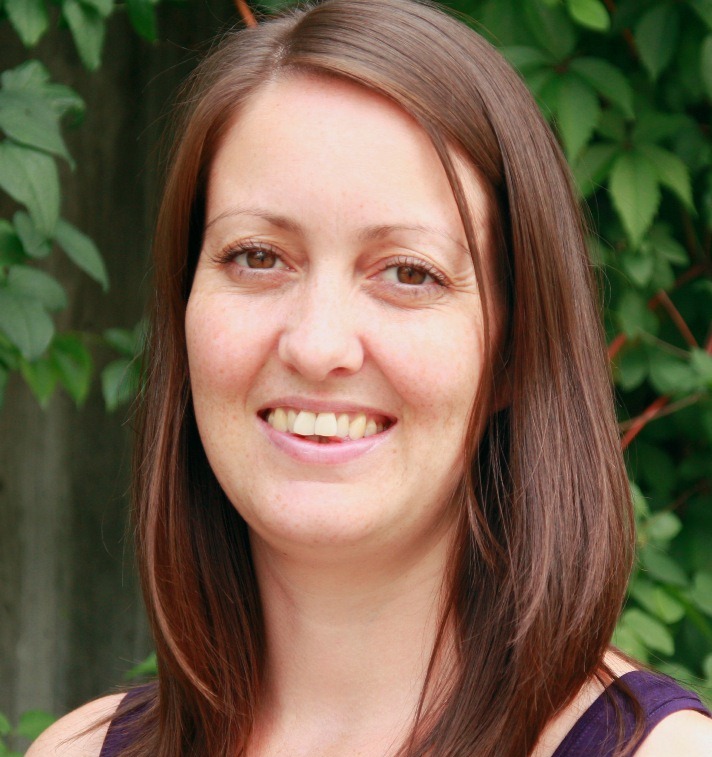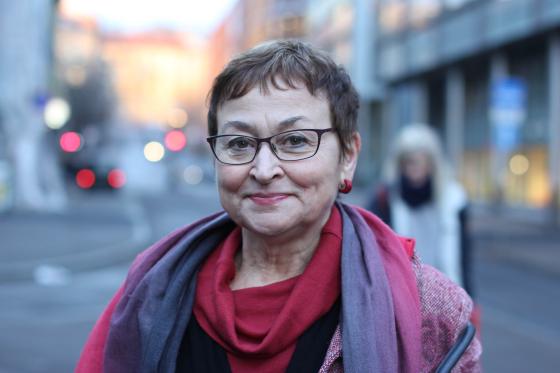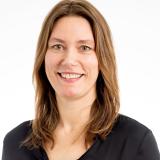The Minister asks for advice
The new white paper on research describes the lack of gender balance in the research sector, but its only recommendation for dealing with the problem is to ask the KIF Committee for advice. The ministry will get what it asks for.
On Friday 8 March, the Government submitted its new white paper on research, Long-term perspectives – knowledge provides opportunity. When presenting the white paper, Minister of Education and Research Kristin Halvorsen posed a direct challenge to the Committee for Gender Balance in Research (the KIF Committee):
“Please give us your advice on how we can improve the gender balance in the research sector.”
“We’ve given our advice to the Ministry of Education and Research many times before, both when it was requested and when it wasn’t. That is part of our mandate. So we will gladly take on the challenge,” responds Gerd Bjørhovde, Chair of the Committee for Gender Balance in Research.
Long-term efforts for gender balance?
“I must say, though, it seems a bit strange that for the first time a white paper on research takes a long-term perspective of 10 years, yet it says nothing about ensuring the future of the KIF Committee. But the positive way to interpret the request for advice is that a future role must be planned for the KIF Committee,” says Bjørhovde.
The KIF Committee has been in existence for almost 10 years now. The committee’s last year of activity will be 2013 unless new funding is allocated for its continuation.
“We know very little about what will happen after 2013. We will gladly give our advice – this is an issue we feel passionate about – but what about also ensuring that funding for the KIF Committee will continue?” asks Bjørhovde.
“In our experience, the KIF Committee’s activities to improve the gender balance have worked, and we appreciate that the Ministry of Education and Research is seeking our advice. But it’s frustrating that a long-term white paper doesn’t incorporate long-range thinking around efforts to improve the gender balance.”
Status
In the chapter on gender balance in research, the Government presents the status using statistics, such as the percentage of women in senior-level positions, the percentage of professors in various subject areas, and the gender distribution at various position levels at universities and university colleges. The situation for the gender (im)balance is described, but no solutions are proposed, except:
The Government will ask the KIF Committee to submit specific proposals for how we can more quickly make progress towards achieving gender balance in senior-level positions at universities and university colleges.
In the chapter on the situation of Norwegian research, the Government makes reference to international analyses and admits that:
Recruitment, career paths and gender balance are generally regarded as areas in need of improvement.
“They don’t mince words. They debunk the myth that Norway is the world champion of gender equality,” says Bjørhovde.
Organisation needed at the national level
During its 10 years of activities, the KIF Committee has proposed numerous measures to improve the gender balance in research.
“As we showed in our report “Intensify the effort”, gender equality efforts need to be organised at the national level. One specific piece of advice is to ensure that the KIF Committee can continue its work after 2013 and establish a knowledge centre for gender equality in research that will serve in an advisory capacity,” says Bjørhovde.
The recommendations in the KIF Committee’s input to the new white paper on research can be summarized in the following main points:
- The gender equality activities at the Research Council of Norway should be strengthened and integrated.
- The internationalisation of research should be viewed in a gender and gender equality perspective.
- The dialogue between the Ministry of Education and Research and the universities and university colleges on the objectives for gender balance in research should be followed up more effectively.
- The focus on leadership and gender balance should be enhanced.
- The quality of education must be viewed in a gender equality perspective.
- The KIF Committee should continue its work after 2013.
“The KIF Committee has cooperated well with the Research Council of Norway in recent years, and the new BALANSE programme, which was launched in the national budget in 2013, is partly a result of a recommendation included in the KIF Committee’s input to the previous white paper on research, Climate for Research. We’re very pleased to have achieved that,” says Bjørhovde.
Male-dominated elite environments
However, there are many other processes at the Research Council that should be viewed in a gender balance perspective, according to the committee chair, such as the excellence in research initiatives and elite environments.
“Studies show that this type of initiative presents special challenges to the gender balance situation. The scientific priorities tend to lean towards male-dominated subject areas, and the leadership of the centres is male dominated. The impact of the elite initiatives on the objective of gender balance needs to be studied, and measures must be implemented if it is shown that these initiatives have a negative impact on gender balance,” says Bjørhovde.
Gender budgeting
Bjørhovde and Hege Elisabeth Løvbak, an adviser to the KIF Committee, explain that the KIF Committee wants to see internationalisation and gender equality viewed in relation to each other, both with regard to international researchers who come to Norway and Norwegian researchers who travel abroad.

“It’s important to be aware of creating gender balanced environments when international researchers are invited to Norway, and the KIF Committee believes that the research sector and the Research Council should look at the instruments to promote internationalisation in light of gender and gender equality – for example, mobility grants that give female and male researchers an equal opportunity to do a sabbatical abroad,” says Bjørhovde.
The KIF Committee believes that gender budgeting of all research funding would be a good way to gain insight into the gender equality situation.
“In gender budgeting, we look at all or parts of operational budgets and analyze how the money is used from a gender perspective. We know that women own a very small portion of the global wealth – luckily the situation isn’t so biased when we look at the gender distribution of Norwegian research funding! But there are major inequalities, and we should look at and gain a better overview of these,” says Bjørhovde.
“Gender budgeting compiles an overview of the gender distribution of research funding. For example, studies have shown that more women than men abandon their research careers because their prospects of being hired for a permanent position are slim,” says Løvbak.
Better training for leaders
Another recommendation is to improve the training for leaders. Ever since the KIF Committee began its work in 2004, it has emphasized that the connection between gender balance and the institutional leadership is critical for success on this front. Knowledge about gender (im)balance is important for leaders at all levels in independent research institutes, universities and university colleges.
“Awareness within the institutions is raised when the KIF committee makes on-site visits to universities and university colleges around the country, talks about its work and gives advice. We have many examples of institutions that have set clear objectives for their future gender balance work after a visit from the KIF Committee,” says Løvbak.
The on-site visits are just one part of the committee’s work related to leadership. Since autumn 2010, the committee has been engaged in a dialogue with the Norwegian Association of Higher Education Institutions about introducing a gender equality perspective in the development of national leadership training.
“Leadership and gender equality must be linked together, and knowledge about gender balance must be incorporated into leadership training, both at the national and institutional levels,” says Bjørhovde.
Do tenure track positions give predictability?
The Government proposes introducing a tenure track system based on the US model in which researchers are hired for temporary positions that have a good chance of becoming permanent in the future, creating a more predictable employment situation. The white paper on research states that although a tenure track system would result in a long period of temporary employment, it would provide better opportunities for career planning. The trial scheme with 300 tenure track positions will only apply to mathematics, natural science, technology, medicine and dentistry.
“I have my doubts about this scheme. Why is it being introduced only as a new measure within the mathematics, natural science and technology subjects? And what about the incentive scheme that has served as a stimulation measure for four years and will now be evaluated? This doesn’t fit well with the principle of ‘long-term perspectives’,” says Bjørhovde.
“If we’re going to try out the tenure track system, it could be interesting to also try it in subject areas that have a large number of women at lower levels but very few at the highest level. This would apply to subjects in the humanities, such as philosophy and history, as well as to some of the professional fields,” explains Bjørhovde.
Missing a clearer focus on women
“I’m also disappointed that the white paper doesn’t state that the tenure track positions will be used to focus on women. Many studies show that temporary positions have the most negative impact on women researchers. The scheme should be used to increase the percentage of women in male-dominated fields,” says Bjørhovde.
Bjørhovde mentions medicine as a good example of a subject area with major challenges.
“Medicine is dominated by women at the student level and has achieved good gender balance at lower levels. But if we look at the professor level, the percentage of women in relation to the recruitment potential remains far too low. Here we see one of the reasons that Norway gets poor scores on the EU’s ‘glass ceiling index’ (She Figures),” continues Bjørhovde.
As early as 2008, the KIF Committee proposed that certain types of qualifying positions, such as tenure track positions, could be viewed in connection with the institutions’ policies to deal with the generational shift.
“This type of position may be a good way of keeping promising researchers. They can apply for a qualifying position after completing their doctoral degree, and if the candidate qualifies for a professor or associate professor position when the senior-level employee leaves, the candidate will be offered the permanent position,” explains Løvbak.
New connections
According to the KIF Committee, the white paper contains a lot of positive aspects as well – for example, it shows an understanding for the connection between the student level and the researcher level.
“Students can be a link between research and education. Not only do we need research-based education; we need education-based research as well,” says Bjørhovde.
Ever since its first term, the KIF Committee has emphasized that educational quality must be viewed in a gender equality perspective, and it has held several meetings with the Norwegian Agency for Quality Assurance in Education (NOKUT) about this. The dynamic between research and education is crucial, and Bjørhovde thinks it is positive that the white paper incorporates the interests and needs of students.
“The long-term perspective of the white paper is also new and positive. A long-term perspective may result in more binding and more targeted initiatives, including in the field of gender equality,” says Bjørhovde.
“Long-range thinking is important because the generational shift that is expected will require us to think along new lines. Gender balance doesn’t happen by itself. The institutions must take responsibility and actively recruit with gender balance in mind,” says Løvbak.
Change is possible
“We have given good, well-considered advice over many years. Just look at our recommendations! Look at the KIF Committee’s final report and at last year’s input to the new white paper on research,” urges Bjørvhode.
“The issue of gender balance in research must be addressed in the formal agenda, both at the national and institutional levels; otherwise the efforts will be carried out by a few passionate individuals in a random kind of way. We see that our on-site visits to institutions are beneficial, and if gender equality efforts are based in the institutional leadership, then change is possible,” says Løvbak.
“The winners of the KIF Committee’s Gender Equality Award also show that systematic efforts over time to promote gender balance have produced results at several institutions. The KIF Committee will continue its work and we look forward to offering even more advice in the future,” continues Løvbak.
“Now we just hope that more of the KIF Committee’s recommendations are followed up,” concludes Bjørhovde.
Translated by Connie Stultz.
The KIF Committee has made recommendations regarding focus areas and the need to continue the committee’s work, including in its input to the new white paper on research and in the report titled Styrk satsingen. Videreføring av Kif-komiteens arbeid etter 2013 (“Intensify the effort. Continuing the KIF Committee’s work after 2013”).
The Government’s white paper on research (Meld. St. 18 (2012-2013) Long-term perspectives – Knowledge provides opportunity) was presented on 8 March 2013.
Read more about the white paper on research and download an English summary in PDF format
The KIF Committees input to the new white paper on research (in Norwegian)

